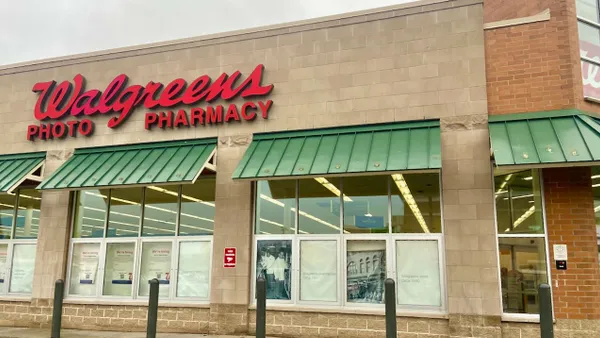Dive Brief:
-
U.S. consumer spending rose 1% in April after rising just 0.1% in March (revised), according to the Commerce Department’s monthly report released Tuesday. The increase was the largest in nearly seven years and beat economists' forecast of 0.7%, according to Reuters.
-
The core personal consumption expenditures price index, (excluding food and energy prices), increased 0.2% in April after increasing 0.1% in March and rose 1.6% in the 12 months through April. That uptick in inflation could spur the Federal Reserve to raise interest rates.
-
The spending rise was aided by a 0.5% increase in Americans’ disposable income and a 0.4% increase of personal income, according to the report. Real disposable income (after taxes and adjusted for inflation) increased 0.2% in April, compared with an increase of 0.3% in March, up 3.3% year over year.
Dive Insight:
The American economy depends mightily on consumer spending, so this report bodes well for a healthier 2016, economists say. The wage gap and the economy’s failure to produce adequate income improvements even in a healthier economy have stymied spending for months. But that’s recently been changing, as reflected in this report.
Although there seems to be an increase in disposable income and wages, that could be a problem for retailers as more consumers are choosing to spend on experiences instead of accumulating material objects. Younger shoppers are especially prone to spending on experiences, according to a PwC survey published last year, which found that millennials said that more than half (52%) of their holiday spending would be experience-related, compared to 39% for older consumers.
Consumers are also choosing to save or pay off debt rather than spend, and when they do, they are increasingly favoring investing in home improvements. Retailers' recent earnings reports reflected these trends, as apparel-heavy retailers like Macy's, Kohl's, and J. Crew reported disappointing results while home improvement retailers beat expectations. These changes are forcing legacy retailers to reconsider their marketing strategies and physical stores, offering more value to the consumer with no-cost online resources and free in-store events.
“The old notion of ‘build it and they will come,’ and the store is in the center and the consumer wants the store, has been flipped on its head. It’s the consumer at the center. The store has to go to the consumer, wherever they are," Robin Lewis, CEO of The Robin Report, told Retail Dive in January.













